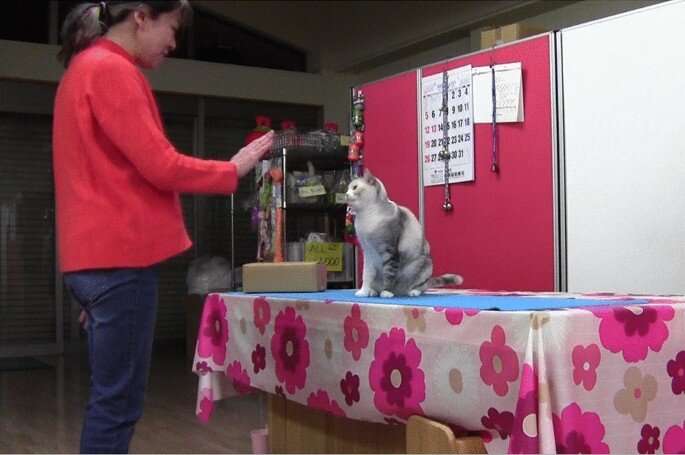Credit: Animal Cognition (2020). DOI: 10.1007/s10071-020-01428-6
A small team of researchers with Eötvös Loránd University's Department of Ethology in Budapest has observed an instance of a house cat recognizing and then mimicking human behavior. The group has written a paper describing their observations and published it in the journal Animal Cognition.
Very few species have been observed imitating human behavior—only orcas, apes, elephants, dolphins and magpies—and now, that list has grown to include house cats. The finding comes as a surprise because cats were not thought to possess the necessary cognitive abilities to intentionally mimic the actions of other creatures.
The work was inspired in a roundabout way. Lead researcher Claudia Fugazza, an animal behaviorist, met with a colleague named Fumi Higaki who related that she had taught her pet cat to copy some of her behavior on command. Both Fugazza and Higaki had been studying an animal training technique called "Do as I do," whereby an animal is trained to perform an action, such as roll over, and then is taught to do it when the trainer speaks the words "do as I do." The training then progresses until an animal is shown a new behavior it has not performed before, and is asked to do it by the trainer once again speaking the worlds "do as I do." Fugazza and Higaki had both been studying the technique with dogs; thus, it was a surprise when Higaki related that she had used the technique to train her cat.
Higaki set up a demonstration of the cat in action at her pet store. To keep from spooking the cat, Fugazza sat some distance away from Higaki and her cat, which was named Ebisu. Fugazza observed as the cat responded to 18 requests to perform an action it had never done before following requests mimic Higaki, including opening a drawer, spinning around, reaching out and touching a toy, and laying down in a certain position. The cat was found to respond as desired approximately 81 percent of the time. The researchers suggest that the cat demonstrated the capability of mapping its own body parts to those of another creature, and to understand how those parts could be used in similar ways.
More information: Claudia Fugazza et al. Did we find a copycat? Do as I Do in a domestic cat (Felis catus), Animal Cognition (2020). DOI: 10.1007/s10071-020-01428-6
Journal information: Animal Cognition
© 2020 Science X Network
























